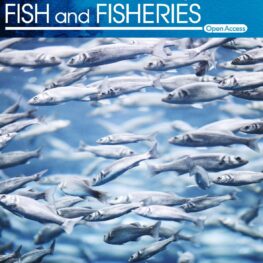Categories
Fisheries Publications 2021Effect of Traditional Processing Methods on the Cultivated Fish Species, Egypt Part I. Mineral and Heavy Metal Concentrations
Mahmoud Mahrous M. Abbas · Sabry M. Shehata · Abdelrahman S. Talab1 · Mohamed H. Mohamed
Fisheries Division- Fish Processing Technology Lab (NIOF)
Biological Trace Element Research
https://doi.org/10.1007/s12011-021-02840-w
(Indexed in Scopus)
Abstract:
The study aimed to determine the effects of wet salting, dry salting, and smoking processing methods on the heavy metal and mineral concentrations in the cultivated fish species which collected from private fish farms at Kafr El-Sheikh Governorate, Egypt, during winter, 2017. The impacts of fish processing on mineral contents of the raw and processed fish were significantly different (P ≤ 0.05). The maximum level of metals in the raw and processed fish samples (wet salted, dry salted, and smoked fish) were recorded for iron ion and the minimum level determined for cadmium ion. However, the highest sequences of the minerals in the raw and processed samples were obtained in this order Na > K > P > Ca. Regarding to processing methods, significant decreases occurred in the minerals of Ca, K, and P, but smaller decrease in the heavy metals of Cd, Cu, Fe, Mg, Ni, and Zn in the wet salted grass carp. In the dry salted mullet, the changes in the minerals and heavy metals are relatively small. However, the greatest changes are on smoked grass carp; most of the minerals, including Ca, K and P, except Na, significantly increased. In heavy metals, Cu, Fe, and Zn, except Mg and Ni, also significant increased.
Keywords: Wet salting, Dry salting, Smoking, Carp fish, Mullet fish, Heavy metals, Minerals
Corresponding author e-mail: [email protected]






